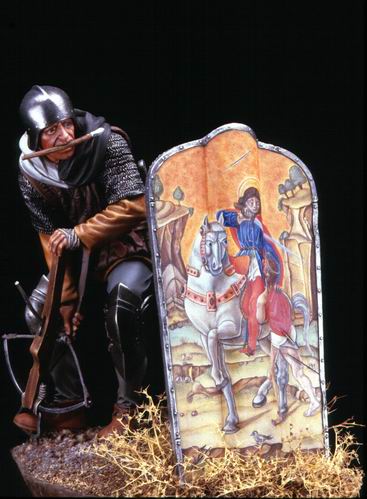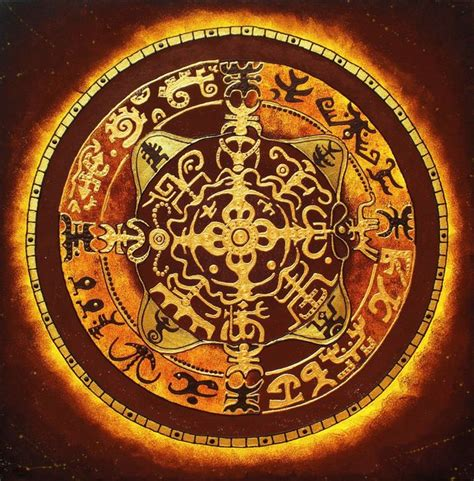Links zum Thema Symbolik / Symbology
Nützliche Mediationshilfen / Useful meditation aids
Literatur
- Carl Gustav Jung (1875-1961) Swiss psychiatrist, psychoanalyst, depth psychologist, Man And His Symbols, Dell, 15. August 1968
- Louise Hay (1926-2017) US-amerikanische Verlegerin (Hay House), Motivationsrednerin, Sachbuchautorin zum Thema positiv Denken, Heile Deinen Körper. Seelisch-geistige Gründe für körperliche Krankheit und ein ganzheitlicher Weg, sie zu überwin-
den, Lüchow, Bielefeld, 1988, September 2007
Klassiker der Körpersymbolik
- Udo Becker, Lexikon der Symbole, Verlag Herder, 8. Ausgabe 12. Januar 2000
- Themenorientiertes assoziatives Lexikon von Wolfgang Bauer, Irmtraud Dümotz, Sergius Golowin, Lexikon der Symbole. Mythen, Symbole und Zeichen in Kultur, Religion und Alltag, Wilhelm Heyne Verlag, 1. April 2001
- Arbeitsbuch von Dr. Rüdiger Dahlke (*1951) deutscher Psychotherapeut, Ganzheitsmediziner, Dozent, Autor, Rita Fasel, Schweizer Iris-, Hand und Fussdiagnostikerin, Die Spuren der Seele. Was Hand, Fuß und Augen über uns verraten, 2010, Neuauflage, Gräfe und Unzer, 5. März 2016
↑
Literature (engl.)
- Manly Palmer Hall [LoC 485] (1901-1990) Canadian-born mystic, occultist, 33rd degree Freemason, author, The Story of Christmas, Philosophical Research Society, 1956
- Harold Bayley, The Lost Language of Symbolism, 1912, Rowman & Littlefield, Totowa, New Jersey, new edition 1974
- Manly Palmer Hall (1901-1990) Canadian-born occult mystic, Freemason 33rd degree, author, most influential work The Secret Teachings of All Ages. An Encyclopedic Outline of Masonic, Hermetic, Qabbalistic & Rosicrucian Symbolical Philosophy, 1928, version of the free Internet archive Sacred Texts, Philosophical Research Society, new edition Juni 1978, Dover Publication,
new edition 28. January 2011
- Louise Hay (1926-2017) US American publisher (Hay House), motivational speaker, author of New Thought self-help books, You Can Heal Your Life, Hay House, 1. January 1984
Classic of body symbology
- John Michell (1933-2009) English writer, The Dimensions of Paradise. The Proportions and Symbolic Numbers of Ancient Cosmology, 1988, Harper & Row, San Francisco, new edition 1990
- Dr. Cathy Burns, US American Bible philosopher, author, Masonic and Occult Symbols Illustrated, Sharing, 1. October 1998
- Paul Lunde (*1943) English historian, specialist in Islamic history and literature, Arabist, School of Oriental and African Studies, London University, editor, The Book of Codes. Understanding the World of Hidden Messages, University of California Press,
1st edition 1. September 2009
- Alexander Vladimirovich Tarunin, Russian author, Sacral symbol. A history of a swastika, CreateSpace Independent Publishing Platform, 2nd edition 29. March 2014
↑
Externe Weblinks
Linklose Artikel
- Blogartikel Goethe und die Anthroposophie, präsentiert von dem Blogspot "Lesen bleibt modern.", Elisa Garrett, deutsche Kulturforscherin, 15. Januar 2015
Goethes Farbenlehre im Vergleich mit Rudolf Steiners Farbtheorie
↑
Weblinks zum Thema Symbolik – Quora
Beiträge verfasst von Elfriede Ammann, präsentiert auf der kalifornischen Frage-und-Antwort Webseite Quora DE
- Beitrag Ist der Weihnachtsmann eine Erfindung von Coca-Cola?, 53 Aufrufe · 1 Like, 28. Dezember 2018
- Beitrag Steckt hinter dem Hahn auf dem Kirchturm eigentlich eine Erklärung? Warum ein Hahn?, 125 Aufrufe ·
1 Like, 8. Februar 2019
- Beitrag Woher kommt die Tradition des roten Teppichs, der für berühmte und wichtige Personen ausgerollt wird?,
Referenz zur Tragödie "Agamemnon", 87 Aufrufe · 2 Likes, 25. Februar 2019
- Beitrag Was bedeutet ein Kreis für Dich?, 80 Aufrufe, 4. April 2019
- Beitrag Sind Ecken eine Utopie in einem Universum, in dem die kleinsten Bausteine rund sind?, 70 Aufrufe ·
2 Likes, 4. April 2019
- Beitrag Warum wird das Symbol "卍" von Buddhisten verwendet?, 210 Aufrufe, 7. April 2019
- Beitrag Warum gilt Freitag, der 13. als Unglücks- bzw. Pechtag?'', 219 Aufrufe · 4 Likes, 20. September 2019
- Beitrag Welche deutschen Glückssymbole gibt es?, 155 Aufrufe · 7 Likes, 7. Januar 2020
↑
External web links (engl.)
↑
Audio- und Videolinks
- Vorgelesene Videopräsentation einer Artikelsammlung Jesus, Weihnachtsmann, Mithra, Magic Mushrooms, exzerpiert aus Artikeln präsentiert von der Publikation atlanteanconspiracy.com, Paul Breuer, Übersetzer, Flo, Sprecher, YouTube Film,
1:05:56 Dauer, eingestellt 3. Oktober 2016
Zusammenhang zwischen Weihnachtsmann, Fliegenpilz, Osterhase, Jesus, Mithra, Manna, König Artus, Stein der Weisen, fliegenden Rentieren
und psychoaktiven Pilzen
- Video Konferenzvortrag von Prof. Dr. Axel Buether (*1967) deutscher Medienwissenschaftler, Wahrnehmungspsychologe, Archi-
tekt mit den Forschungsschwerpunkten Farbe, Licht und Raum, Professor für Didaktik der visuellen Kommunikation, Bergische Universität Wuppertal, Von Goethes Farbenlehre zur Farbpsychologie der Gegenwart. Die Wirkungen der Farben auf unser Erleben und Verhalten, Farbkonferenz, Philosophicum, Basel, Schweiz, 29.-30. September 2017, präsentiert von colour.edu-
cation, YouTube Film, 33:02 Minuten Dauer, eingestellt 29. Dezember 2017
- Videopräsentation von Kai Orak (*1961) polnischer Aussiedler, Freidenker, Friedensaktivist, Farben & Symbole Grundlagen, Bitchute Film, 21:38 Minuten Dauer, eingestellt 20. April 2020
- Videointerview mit Kai Orak (*1961) polnischer Aussiedler, Freidenker, Friedensaktivist, Kai Orak: Die (geheime) Bildersprache in den Medien, präsentiert von dem unabhängigen deutschen Internet-Fernsehsender Eingeschenkt.TV, Gastgeber Sascha Vrecar, YouTube Film, 35:28 Minuten Dauer, eingestellt 21. Januar 2021
Seit 2016 hat Kai Orak aus Hannover begonnen, die seit 100 Jahren existierende Bildsymbolik (gesteuert über Reuters Nachrichtenagentur) im Zusammenhang mit öffentlich agierenden Personen studiert.
☛ Gesichtsbild mit rein schwarzem Hintergrund: Person wird vom Tiefen Staat / Freimaurer unterstützt/gefördert.
☛ Gesichtsbild mit Silhouette/schwarzem Balken auf rein schwarzem Hintergrund:
Person wird vom Tiefen Staat / Freimaurer besonders abgelehnt.
☛ Gesichtsbild mit rotem Punkt daneben/dahinter (Verstärkungssymbol): Person / Anliegen wird vom Tiefen Staat / Freimaurer unterstützt.
☛ Serielles Gesichtsbild – 1 deutliches, mehrere unscharfe: Person spricht im Auftrag des Tiefen Staates / Freimaurer.
☛ Gesichtsbild eingeschlossen in ein Schlüsselloch (Schlüssellocheffekt): Person / Anliegen wird vom Tiefen Staat / Freimaurern abgelehnt.
☛ Gesichtsbild überdeckt von einem roten Punkt (Verstärkungssymbol):
Person / Anliegen wird vom Tiefen Staat / Freimaurer besonders abgelehnt.
☛ Gesichtsbild hinter Gittern (Gittersymbol davor): Person steht auf der Abschussliste des Tiefen Staates / der Freimaurer.
Hinweis: In manchen Fällen zeigt die Hintergrund/Vordergrund-Bildsymbolik, dass die Interessen des Tiefen Staates und der Freimaurer einander widersprechen.
- Videointerview mit Alexander Stier, deutscher Okkultist, Symbole aus der Sicht der Eingeweihten, Gastgeber Heiko Fauth von SALOHEA-Podcast, YouTube Film, 56:14 Minuten Dauer, eingestellt 8. Dezember 2024
↑
Audio and video links (engl.)
- 2-part audio interview with Michael Tsarion, Irish macrohistorian, symbolist, sidereal astrologer, mythologist, occultist, "conspi-
racy" researcher, public speaker, author, presented by the former US American Spectrum Radio Network, host James Haarp, recorded 29. March 2011, YouTube film, posted 17. April 2011
- Video presentation by Genevieve von Petzinger, Canadian paleoanthropologist, speaker, Why are these 32 symbols found in caves all over Europe, presented by TED Talks, YouTube film, 12:05 minutes duration, posted 18. December 2015
- Video presentation by Sandra Ngo-Trong, OUROBOROS symbol – How the SNAKE THAT EATS ITSELF rules the Cosmos (Meaning of Eternal Cycle), presented by the YouTube channel Chasing God, 10:29 minutes duration, posted 25. June 2019
- Video presentation by Sandra Ngo-Trong, Dragons – Origins and Evolution – East vs. West, presented by the YouTube channel Chasing Gods, YouTube film, 14:26 minutes duration, posted 23. February 2021
- Video presentation by Jonathan Pageau, US American artist, public speaker, artist, Jonathan Pageau on Art, Metaphor vs. Literal, Christ, The West, and Better Left Unsaid, presented by the YouTube podcaster Theories of Everything with Curt Jaimungal, YouTube film, 2:10:06 duration, posted 2. April 2021
- Videoprässentation von Peter Freiherr von Liechtenstein, deutscher naturheilkundlicher Mediziner, investigativer Autor, 111. Symbolismus! Bedeutung und Anwendung eines verborgenen Wissens mit Praxisteil, YouTube film, 1:30:38 duration, posted
4. März 2022
Slideshows, narratives
- Basic slideshow presentation by Jordan Maxwell (1940-2022) US American esoteric scholar, radio host, lecturer, author, Jordan Maxwell – Basic Slide Presentation, presented by Truthseekers Network, Arcadia, California, 20. January 1993,
YouTube film, 1:57:33 duration, posted 11. October 2018
- Narrated video Indigenous European symbol Swastika: History of the Swastika – Mezine, Old Europe, Vinca, Cucuteni Trypillian, Greece, Rome, Celtic, Slavic, Germanic Baltic, Dailymotion film, 4:17 minutes duration, posted 20. May 2015
The earliest swastika ever found was uncovered in Mezine, Ukraine. It is carved on late paleolithic figurine of mammoth ivory, being dated as early
as about 10,000 BC. Among the earliest cultures utilizing the swastika is the Old Europe, neolithic Danube Valley Civilization, the Hungarian Vinţa village, Lupșa Commune, Alba County in Romania, the traditional Rumanian Russian Cucuteni-Trypillian culture.
Das älteste jemals gefundene Hakenkreuz (Swastika) wurde in Mezine, Ukraine, entdeckt. Es wurde einer spätpaläolithischen Figurine aus Mammut-Elfenbein (datiert auf ~10000 v. Chr.) aufgeprägt. Das Alte Europa, die neolithische Donautal-Zivilisation, Vinca, die traditionell rumänisch-russische Cucuteni-Tripolje-Kultur gehören zu den frühesten Kulturen, die Hakenkreuze verwenden.
Die von außen gelenkte Revolution der Bolschewiki von 1917 ging wie die nachfolgende Französische Revolution und der Amerikanische Bürgerkrieg von der Britischen Krone aus. Durch die Bolschewiki kam die Swastika (das Hakenkreuz) nach Russland.
Linkless media offerings
- Video presentation by Michael Tsarion, Irish macrohistorian, symbolist, sidereal astrologer, mythologist, occultist, "conspiracy" researcher, public speaker, author, Symbolic Literacy. The Subversive Use of Sacred Symbolism in the Media, sponsored by the Conspiracy Conference, 2003, YouTube film, 1:42:16 duration, posted 1. September 2012
↑
|





